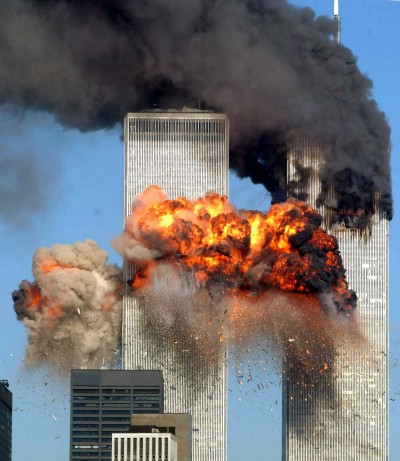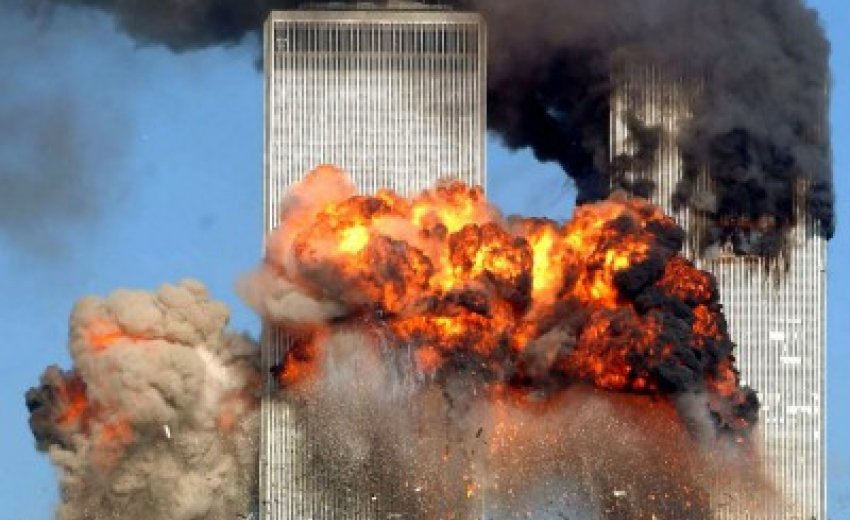September 11, 2001, 13 years later.
 From my office window I caught a clear view of a plane crashing into the World Trade Center -- the largest attack on the homeland of the United States since Pearl Harbor. Terrorists aimed at the citadels of American pre-eminence: The World Trade Center, reminding the world of America's financial might; Pentagon -- the symbol of overwhelming military power; and a third plane, brought down short of its mark - the nation's political center.
From my office window I caught a clear view of a plane crashing into the World Trade Center -- the largest attack on the homeland of the United States since Pearl Harbor. Terrorists aimed at the citadels of American pre-eminence: The World Trade Center, reminding the world of America's financial might; Pentagon -- the symbol of overwhelming military power; and a third plane, brought down short of its mark - the nation's political center.
The American political and military response was both fast and furious.
Both major political parties transcended their differences, rallied around the President, passed the Patriot Act, backed a war in Afghanistan that sheltered Osama bin Laden, and an ill-advised invasion of Iraq while creating a massive Homeland Security Department.
The times were tumultuous. No matter the race, religion or color, every American felt the trauma. 9/11 brought the nation together. But it also tore apart the national fabric, exposing fault lines that we had brushed aside with a tolerant wink.
Societal consequences included discriminatory backlash, unsupported suspicions, safety issues, and censorship. After-effects continue today, fully 13 years later. The repercussions are visible, especially in small town America.
Brown-skinned people were targeted as sympathizers, if not active partners of Al Qaeda terrorists. For Sikhs, the new political and social perceptions were especially unsettling and threatening.
In spite of their 100-year old history in America, Sikhs bore the brunt and still do because they are bearded and wear turbans. The visage of a turbaned and bearded bin Laden and el Zawahiri flashed on the tube all day, every day. The average American forgot that none of the terrorists who commandeered the planes wore a turban or beard.
Four days later on September 15, Balbir Singh Sodhi, a turbaned Sikh was shot dead in Arizona. When arrested his killer yelled, "I'm a patriot and an American."
Then a New York gurduara was burned down. A month later it was Surinder Singh in Los Angeles, and then in cities across the country from Daly City, Elk Grove, Sacramento, and Fresno (California); to Phoenix and Tempe (Arizona); Queens and New Hyde Park (New York); Joliet (Illinois); Bryan (Texas); Albuquerque (New Mexico); Carteret (New Jersey), Sterling Heights (Michigan), and elsewhere, attacking and harassing Sikhs, culminating in killing of Sikhs in the middle of their prayers in a gurduara in Oak Creek, Wisconsin, on August 5, 2012.
Walking around town wearing a turban was not safe; but many did, including me. Minimally we expected catcalls on the street. Some Sikhs were not so fortunate. Traveling by air a Sikh male was always singled out for a special search. Our black humor surfaced thus: "My favorite activity is to be selected randomly for a search at the airport." Some politicians (like Ex-Congressman Cooksey) made political hay by deriding Sikhs as Osama's "towel-headed" henchmen.
How did events shape the Sikh response in the United States? In balance, I would say very positively with a dollop of Charhdi Kalaa. Remember "Dukh daroo sukh roag bhaya…"(Guru Granth).
Challenges come with opportunities-- a call to action to nudge us out of our slumber.
Some Sikhs took the easy way out and cut their hair to merge into the maddening crowd; others, however, who had not maintained long unshorn hair, rose to the challenge and became keshadhari Sikhs.
But the most heartwarming story deserves telling and retelling: Our gurduaras and communities are generally insular and preach to the choir. Our community mostly lives in a cocoon of its own making. But 9/11 changed us all. Organizations like SALDEF, Sikh Coalition, United Sikhs and Ensaaf - products not of immigrant Sikhs but of their progeny often born and raised in the USA - took the initiative. They raised our visibility sky high in the corridors of power. Using the instruments of justice they changed the landscape by mobilizing governmental, religious and civic institutions. They appeared at Congressional Hearings, national press briefings and in media coverage. Civic leaders of many towns organized meetings where Sikh speakers addressed the injustice of mistaken identity and misplaced suspicion.
Visit the sites of these organizations for details of what went wrong and how it is being set right. These young people are creating history.
And I also think of the realities of India where a monumental injustice occurred in 1984 but the wounds still fester, unattended and untreated.
History never looks like history when you are living through it. We are not the first minority to have been targeted; Jews, Blacks, East Europeans, Italians, Irish, Japanese, Chinese, among others have walked that path. My optimism stems from the fact that the historical arc of American society, though long and non-linear, bends towards progress.
"The making of history has no spectators, only participants."


